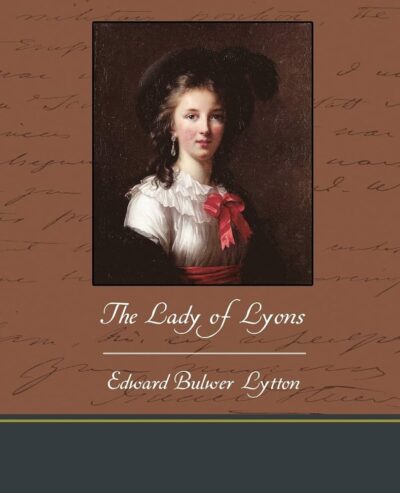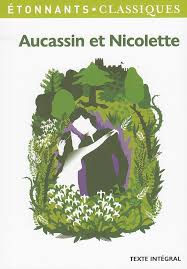14 Results with the "Romantic Melodrama" genre
Adventure Fiction (1164)
Biography (435)
Business & Finance (1)
Children's Literature (124)
Comics (6)
Culture (51)
Drama (123)
Dystopian (29)
Fable (86)
Fantasy (1132)
Fantasy (203)
Fiction (1010)
Finance (1)
Gothic Fiction (12)
Historical Fiction (615)
History (122)
Horror (56)
Lifestyle (36)
Literary (404)
Literary Fiction (207)
Memoir (113)
Mystery (422)
Non-fiction (87)
Novel (549)
Paranormal Fiction (96)
Philosophical (182)
Philosophy (45)
Poetry (249)
Political Fiction (14)
Politics (42)
Practical (32)
Psychological (4)
Psychological Thriller (108)
Relationship (6)
Romance Novel (716)
Satire (91)
Science (46)
Science Fiction (345)
Self-help (68)
Society (65)
Society (2)
Spiritual Growth (1)
story (2)
Thriller (704)
True Crime (56)
view (11)
Women's Fiction (2)
Young Adult (233)
-
Chapter
Scene I — The Lady of Lyons
 Scene I of The Lady of Lyons Act V opens on the bustling streets of Lyons, painted with the passage of time and the shadow of unresolved love. It’s been over two years since Pauline and Melnotte’s lives were torn apart by pride and deception. Now, the once-humble soldier Paul Melnotte has become Colonel Morier, a hero honored for valor, yet still haunted by the question of loyalty in love. As conversations among military officers orbit around his courage and mystery, they also hint at a deeper…
Scene I of The Lady of Lyons Act V opens on the bustling streets of Lyons, painted with the passage of time and the shadow of unresolved love. It’s been over two years since Pauline and Melnotte’s lives were torn apart by pride and deception. Now, the once-humble soldier Paul Melnotte has become Colonel Morier, a hero honored for valor, yet still haunted by the question of loyalty in love. As conversations among military officers orbit around his courage and mystery, they also hint at a deeper…-
47.9 K • Ongoing
-
-
Chapter
Preface
 Preface opens with a candid reflection from the author, who speaks not just as a playwright, but as a participant in a broader creative movement. Rather than replicating the story of The Bellows-Mender, which only faintly lingers in his memory, he reshapes the premise into something more purposeful and emotionally nuanced. The narrative no longer serves as mere imitation—it becomes a vessel for exploring deeper themes through wholly original characters. By situating the story during the era of the French…
Preface opens with a candid reflection from the author, who speaks not just as a playwright, but as a participant in a broader creative movement. Rather than replicating the story of The Bellows-Mender, which only faintly lingers in his memory, he reshapes the premise into something more purposeful and emotionally nuanced. The narrative no longer serves as mere imitation—it becomes a vessel for exploring deeper themes through wholly original characters. By situating the story during the era of the French…-
47.9 K • Ongoing
-
-
Chapter
Notes
 In this notes "THE BLENDING"--of alternate prose and verse--"is not unknown in various countries." Thus in Dr. Steere's Swahili Tales (London, 1870), p. vii. we read: "It is a constant characteristic of popular native tales to have a sort of burden, which all join in singing. Frequently the skeleton of the story seems to be contained in these snatches of singing, which the story-teller connects by an extemporized account of the intervening history . . . Almost all these stories had sung parts, and of some…
In this notes "THE BLENDING"--of alternate prose and verse--"is not unknown in various countries." Thus in Dr. Steere's Swahili Tales (London, 1870), p. vii. we read: "It is a constant characteristic of popular native tales to have a sort of burden, which all join in singing. Frequently the skeleton of the story seems to be contained in these snatches of singing, which the story-teller connects by an extemporized account of the intervening history . . . Almost all these stories had sung parts, and of some…-
12.1 K • Ongoing
-
-
Chapter
Introduction
 Introduction to Aucassin and Nicolete begins not with lofty claims, but with quiet distinction. This poetic work, unlike many literary relics from the same era, has endured across centuries without losing its charm or originality. Blending prose with verse, it introduces a narrative form called the cante-fable, which doesn’t merely tell a story but performs it. Where most medieval texts lean toward morality tales or courtly grandeur, this piece feels more personal, intimate, and occasionally ironic. It…
Introduction to Aucassin and Nicolete begins not with lofty claims, but with quiet distinction. This poetic work, unlike many literary relics from the same era, has endured across centuries without losing its charm or originality. Blending prose with verse, it introduces a narrative form called the cante-fable, which doesn’t merely tell a story but performs it. Where most medieval texts lean toward morality tales or courtly grandeur, this piece feels more personal, intimate, and occasionally ironic. It…-
12.1 K • Ongoing
-
- Previous 1 2
